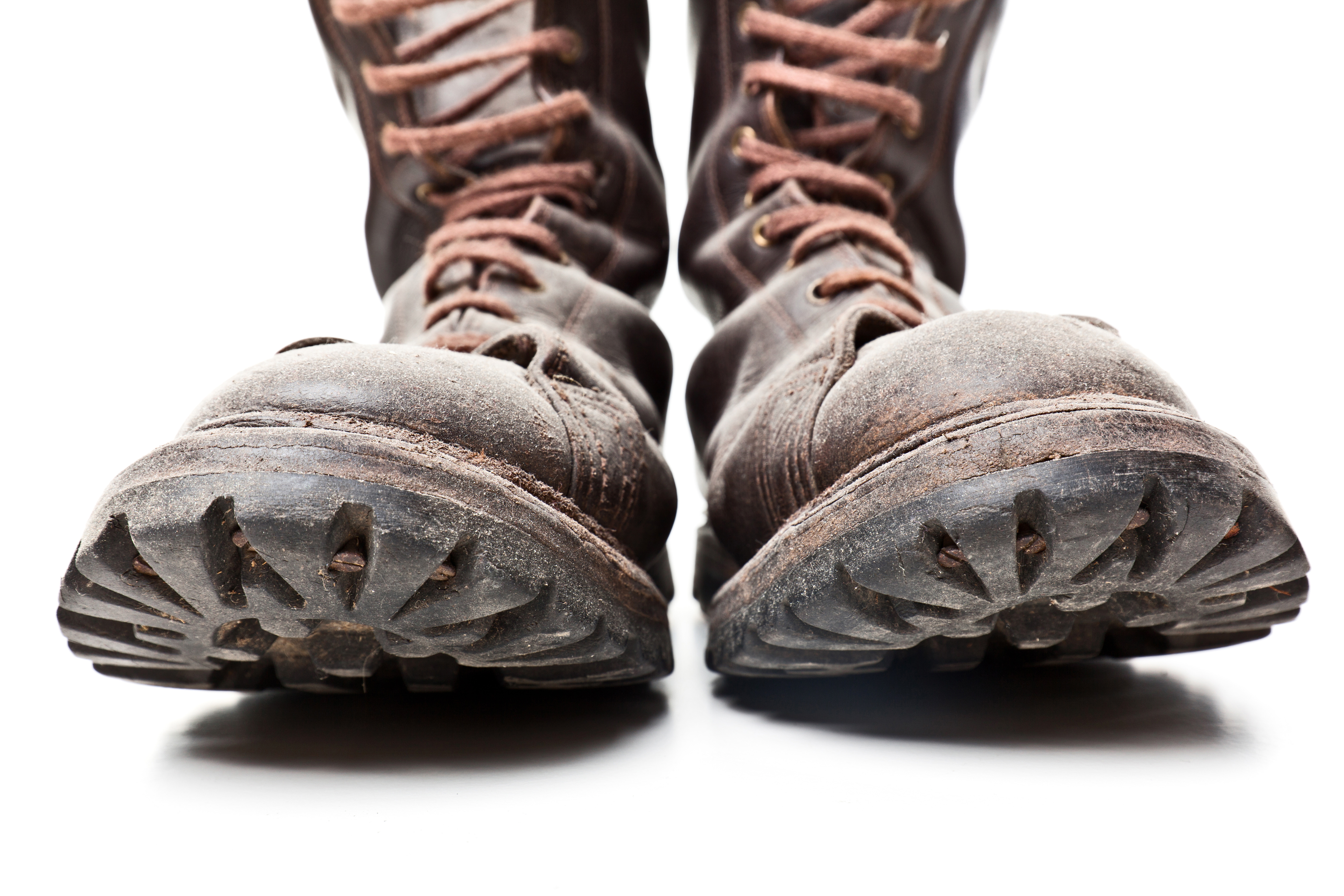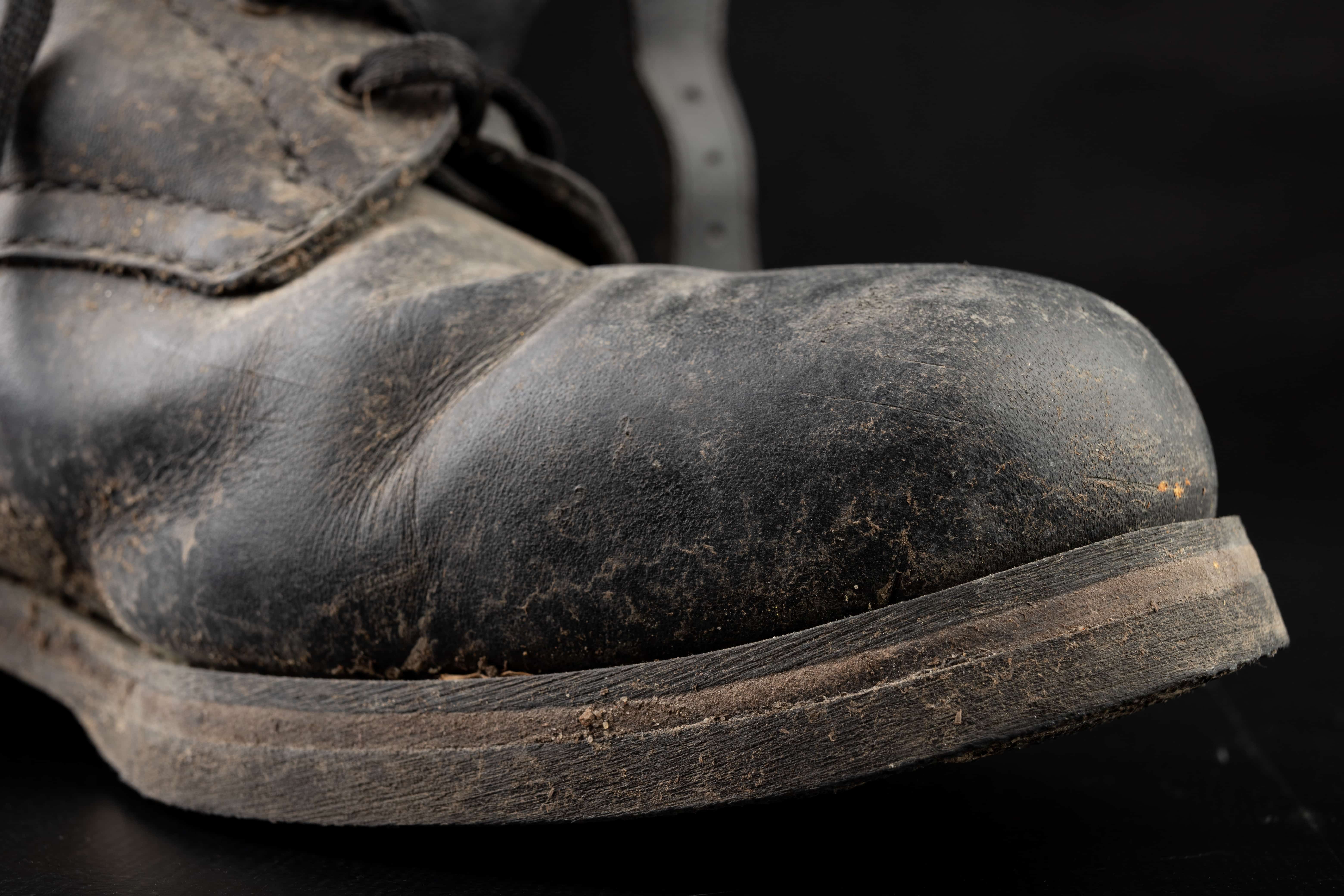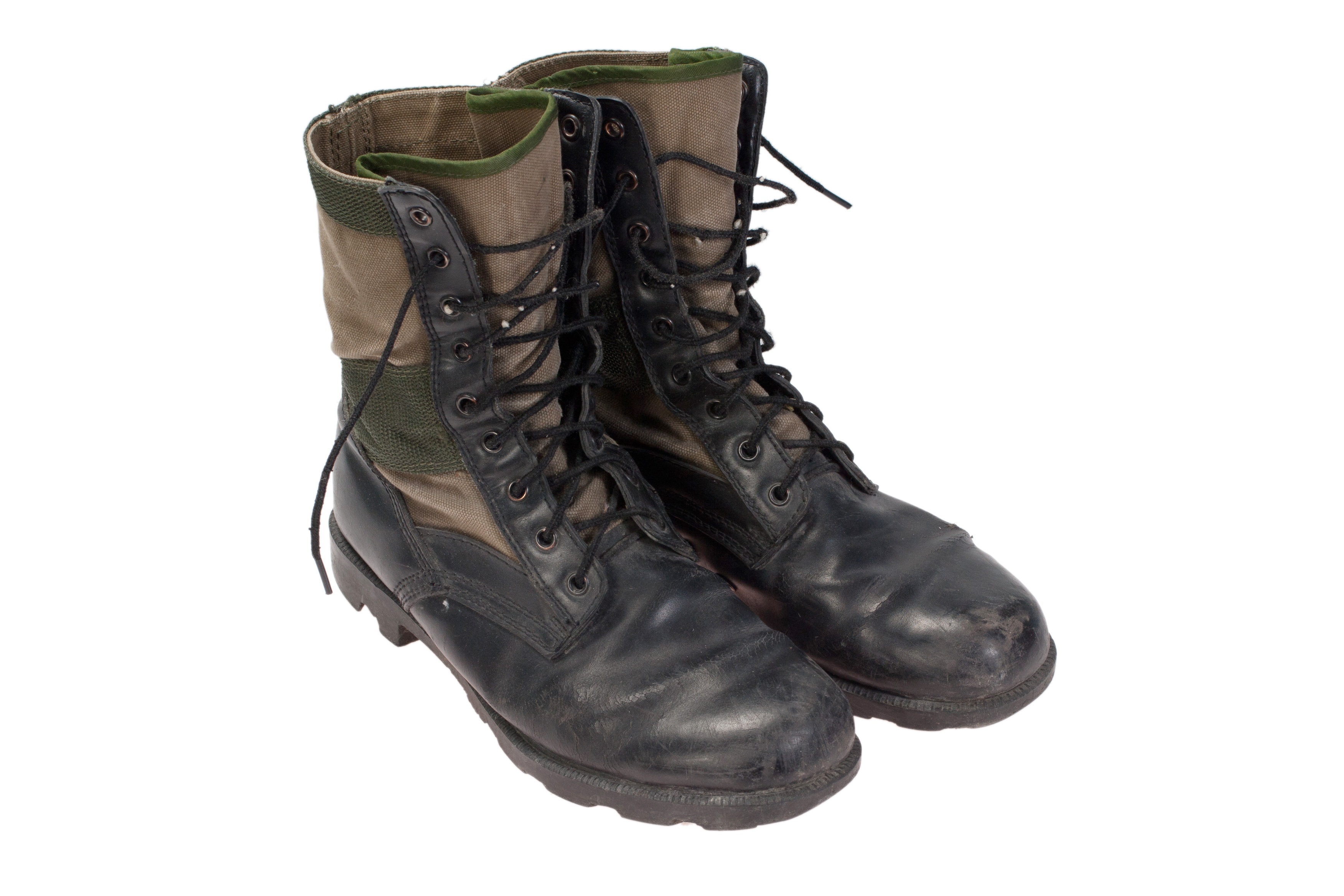
Winter comes with many problems, including the wear and tear it puts on our shoes. Question is, will combat boots have the same fate if they’re used in the snow?
Snow will not ruin combat boots if the necessary precautions are taken to ensure their upkeep. Modern tactical combat boots typically have waterproof or water-resistant qualities. Leather combat boots need to be waterproofed or otherwise maintained to during the winter months to prevent damage.
Check out the ways you can keep your combat boots, leather or not, looking their best.
What Snow Does To Boots
The main issue is that snow gets your boots wet. Once they’re wet, they stay wet in the cold weather, which makes walking anywhere in them a miserable affair.
Consistent wetness from snow can decrease your combat boots’ lifespan. Even though combat boots are meant to last against tough weather conditions, they aren’t completely immune. The fabric or leather undergoes a repeated wet/dry cycle, and if they aren’t properly dried out in time or waterproofed in the first place, the cycle will damage their seams.
Once the seams are damaged, space between the sole and the rest of the boot starts to open up. Then you’ll feel more than a bit of water, and the boots you spent precious money on will have gone to waste.
And what do cities put down on sidewalks and roads when it snows? Salt. Depending on where you wear your combat boots, they could be exposed to that salt-snow sludge.
In the best-case scenario, the salt will leave your boots stained, which is annoying but easily treatable.
In the worst-case scenario, the salt will dry and crack your leather combat boots past the point of saving. Modern combat boots don’t have much of an issue with salt as much as leather boots do.
What You Can Do For Your Boots In Winter

Many combat boots come with waterproofing abilities, but you can take extra precautions to keep water out. This way, your feet are less likely to become wet popsicles when you put your boots to the test in snowy conditions.
KIWI Boot Waterproofer works on most types of shoe material, including combat boot material. It’s specifically geared toward treating outdoor boots, so your combat boots can get an extra boost in the waterproofing department while they still retain their breathability.
Atsko Sno-Seal Original Beeswax keeps your leather combat boots in tip-top shape. Made from beeswax, its natural properties will protect your boots from the effects of snow and salt. It also prevents any water from getting into your leather boots and soaking your feet. Outdoor enthusiasts swear by this product because of its long-lasting qualities and affordable price.
When it comes to drying out your boots, be sure to put them in a warm place–but not next to a fireplace or heater, which will accelerate the drying out process in leather combat boots. Loosen up the shoelaces to give them space to dry. After a long day out in the snow and cold, laces become their very own ice blocks. They need to breathe to get rid of moisture.
To make sure that your feet are kept extra warm and dry during the winter, consider a pair of waterproof socks to wear with your combat boots.
How To Waterproof
The waterproofing process is fairly easy. You can either wax or spray, plus you don’t have to spend too much time and effort getting your combat boots ready to withstand the snow.
Wax
Before you wax, remove the laces, so they won’t get in the way once you begin. Clean your leather combat boots off to remove debris and stains with a brush or a cloth. If your boots are particularly dirty, you can scrub them underneath running water and allow them to dry before waterproofing.
Follow the instructions on the wax waterproofing agent. This will ensure that you have the best results for the longest time. You can apply the wax with your fingers, preferably gloved, or with a soft cloth. After, give your boots time to dry. Sunlight quickens the drying process.
Because winter can cause the wax to harden with cold, you can soften (not liquify) it with a hairdryer on low for a couple of minutes.
Spray
Do the same as you would with wax by removing the boot’s laces and cleaning off stains. Sprays typically ask that shoes are completely dried before using, so be sure that if you’re going to apply any to your combat boots, you give them time to dry out between wearing.
It’s a good idea to test a small area of your boot with the spray you use before using it everywhere else. Sprays may discolor the boot, so you want to check the color to make sure it’ll be a good match.
In a well-ventilated area, hold the boot upright and away from you as you spray. You should put at least 7 to 12 inches of space between the boot and the spray, which helps get an even coating. For extra assurance, apply another coat a few hours later or whatever the instructions dictate. Allow the boots to dry in a sunny area.
Treating Leather Combat Boots

Unlike regular combat boots, leather combat boots need a bit of extra care. Snow and salt can easily destroy them, so you’ll want to prevent a good pair of boots from getting ruined if you can.
Along with using a wax sealant to waterproof your boots in the winter, have a shoe cleaner handy when it comes time to remove any salt stains. If you want to keep it simple and inexpensive, an equal mixture of vinegar and water cleans salt from leather.
Although you may not be concerned with keeping your leather combat boots shiny, treating them with shoe polish preserves the color and texture, so they look good longer.
And if you’ve come home from a long day out in the snow with soaked leather boots, take them off and stuff them with newspaper. This gives water a place to go, and it will quicken the drying process.